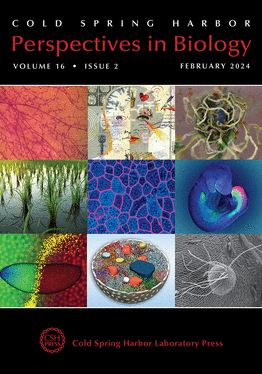果蝇中枢神经系统中神经胶质对电路布线、点火和衰竭的调控
IF 8.4
2区 生物学
Q1 CELL BIOLOGY
引用次数: 0
摘要
果蝇等小型模式生物的分子遗传学方法有助于阐明神经细胞生物学的基本原理。尽管近年来人们对使用无脊椎动物制备物来确定其体内功能的兴趣显著增加,但对神经胶质细胞的了解却少得多。本综述重点介绍我们目前对果蝇中枢神经系统(CNS)中发现的三种主要神经元相关胶质细胞类型--胃细胞、皮层胶质细胞和鞘状胶质细胞--的了解。这些细胞的共同作用类似于哺乳动物的星形胶质细胞和小胶质细胞;它们与神经元密切相关,包括围绕神经元细胞体和近端神经元,调节突触,并吞噬神经元碎片。最近令人兴奋的研究表明,这些中枢神经系统胶质细胞在神经回路的形成、功能、可塑性和病理学方面发挥着关键作用。随着我们对果蝇中枢神经系统神经胶质细胞如何与神经元相互作用有了更深入的分子和细胞了解,很明显,它们与哺乳动物的神经胶质细胞有着重要的分子和功能属性,将成为神经胶质细胞功能机理研究的绝佳平台。本文章由计算机程序翻译,如有差异,请以英文原文为准。
Glial Regulation of Circuit Wiring, Firing, and Expiring in the Drosophila Central Nervous System
Molecular genetic approaches in small model organisms like Drosophila have helped to elucidate fundamental principles of neuronal cell biology. Much less is understood about glial cells, although interest in using invertebrate preparations to define their in vivo functions has increased significantly in recent years. This review focuses on our current understanding of the three major neuron-associated glial cell types found in the Drosophila central nervous system (CNS)—astrocytes, cortex glia, and ensheathing glia. Together, these cells act like mammalian astrocytes and microglia; they associate closely with neurons including surrounding neuronal cell bodies and proximal neurites, regulate synapses, and engulf neuronal debris. Exciting recent work has shown critical roles for these CNS glial cells in neural circuit formation, function, plasticity, and pathology. As we gain a more firm molecular and cellular understanding of how Drosophila CNS glial cells interact with neurons, it is clear that they share significant molecular and functional attributes with mammalian glia and will serve as an excellent platform for mechanistic studies of glial function.
求助全文
通过发布文献求助,成功后即可免费获取论文全文。
去求助
来源期刊

Cold Spring Harbor perspectives in biology
CELL BIOLOGY-
CiteScore
15.00
自引率
1.40%
发文量
56
审稿时长
3-8 weeks
期刊介绍:
Cold Spring Harbor Perspectives in Biology offers a comprehensive platform in the molecular life sciences, featuring reviews that span molecular, cell, and developmental biology, genetics, neuroscience, immunology, cancer biology, and molecular pathology. This online publication provides in-depth insights into various topics, making it a valuable resource for those engaged in diverse aspects of biological research.
 求助内容:
求助内容: 应助结果提醒方式:
应助结果提醒方式:


